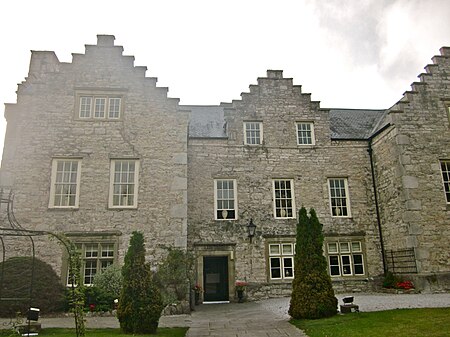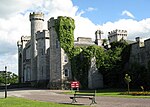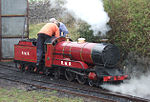Faenol Fawr, Bodelwyddan

Faenol Fawr is an Elizabethan H-plan mansion with crow-stepped gables. The house is situated immediately to the north of Glan Clwyd Hospital in the parish of Bodelwyddan in the historic county of Flintshire, but now in Denbighshire. It was formerly in the township of Faenol, which until 1860 was in the parish of St. Asaph. Thomas Pennant passed by Faenol Fawr in his Tour to Snowdonia in 1776, when he records: "In a very wet situation, beneath Kinmael, is Vaenol; one of the best old houses in the county of Flint. It was built in 1595, by John Lloyd…. register (Registrar) of St Asaph in the reign of Queen Elizabeth; a place extremely profitable, before the powers of the church were abridged". An extra illustrated copy of the Tour in Wales in the National Library of Wales, has a water-colour of Faenol Fawr in about 1776, which shows that present building is little changed in appearance. The house is listed Grade II*, as is the dovecote to the west of the house. There is another smaller and earlier house with a cyclopean doorway that is now joined to the main house. Immediately to the N W is the Old Farm House with crow stepped gables, which is listed grade II, as is also the large barn to the east. Facing the Old Farm House is a row of converted cartsheds The house was badly damaged by fire in 1980 and has now been converted into a country house hotel.
Excerpt from the Wikipedia article Faenol Fawr, Bodelwyddan (License: CC BY-SA 3.0, Authors, Images).Faenol Fawr, Bodelwyddan
Rhuddlan Road,
Geographical coordinates (GPS) Address External links Nearby Places Show on map
Geographical coordinates (GPS)
| Latitude | Longitude |
|---|---|
| N 53.275171 ° | E -3.499719 ° |
Address
Faenol Fawr Hotel
Rhuddlan Road
LL18 5UN , Bodelwyddan
Wales, United Kingdom
Open on Google Maps









